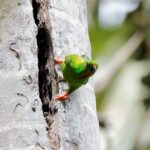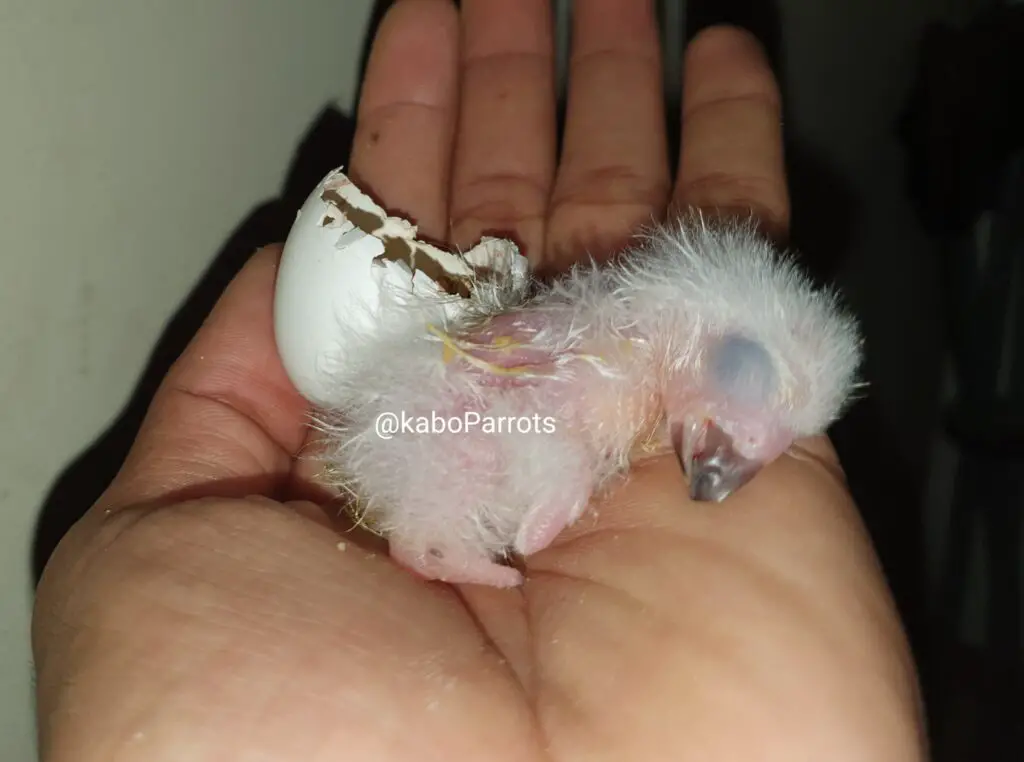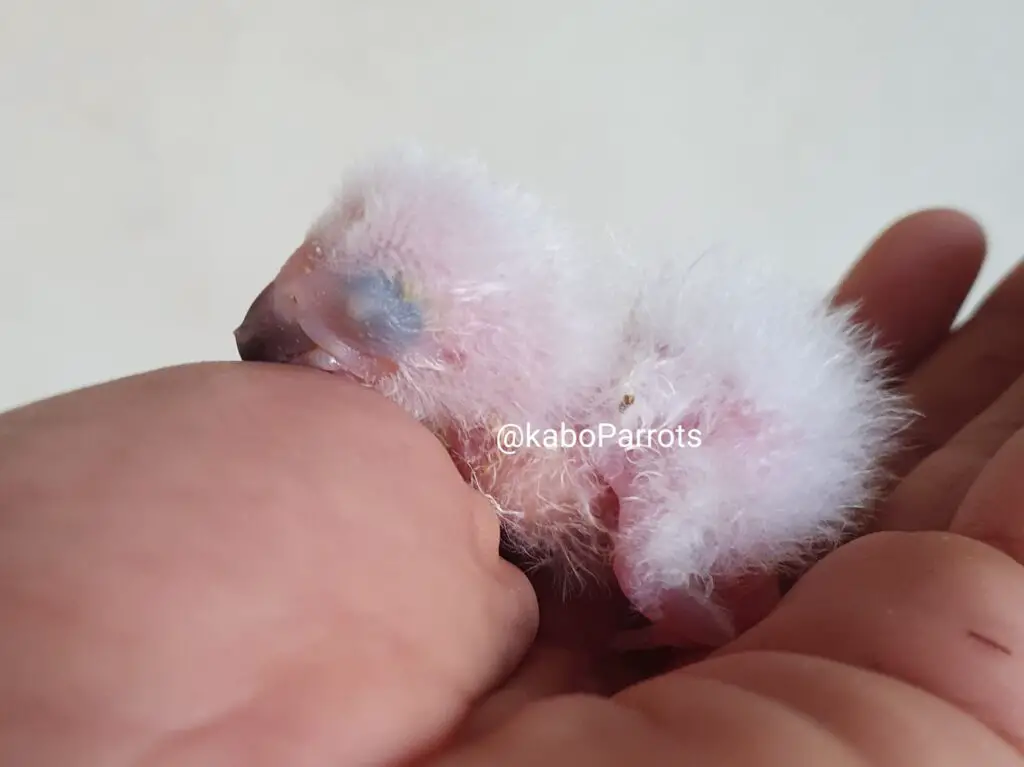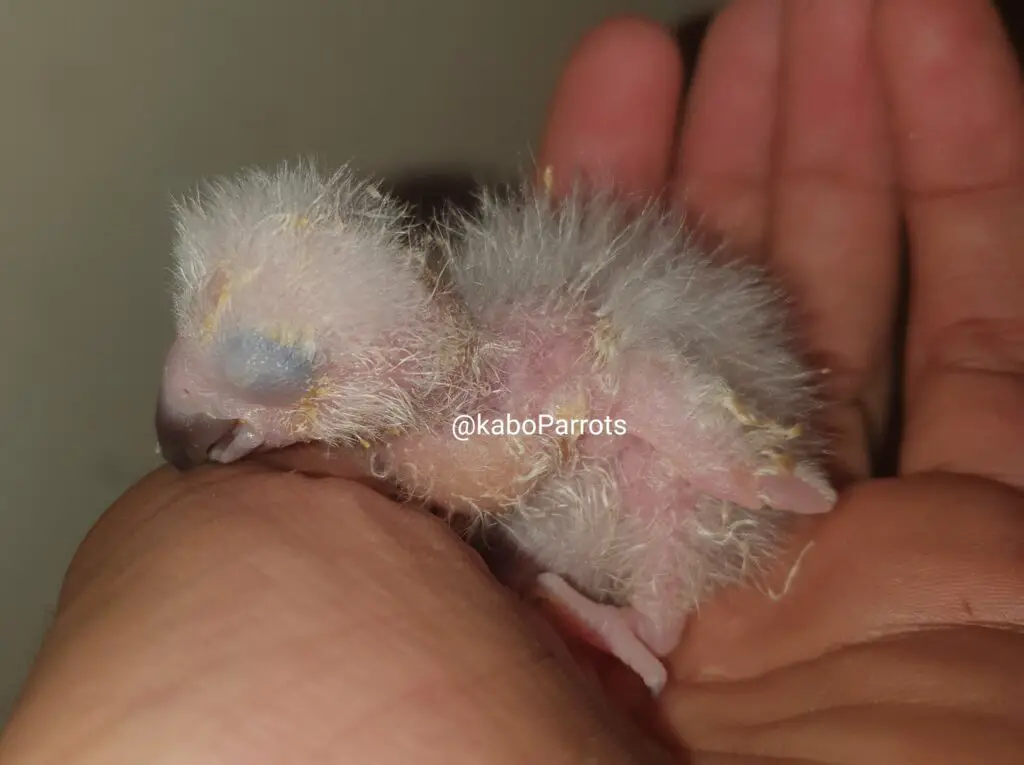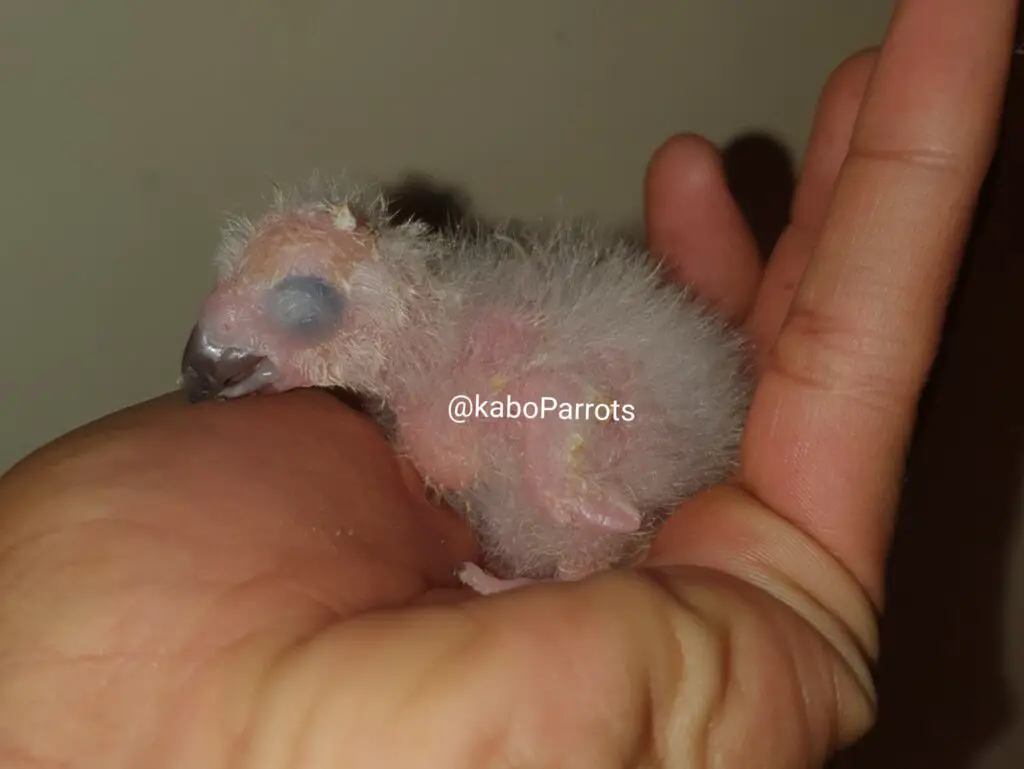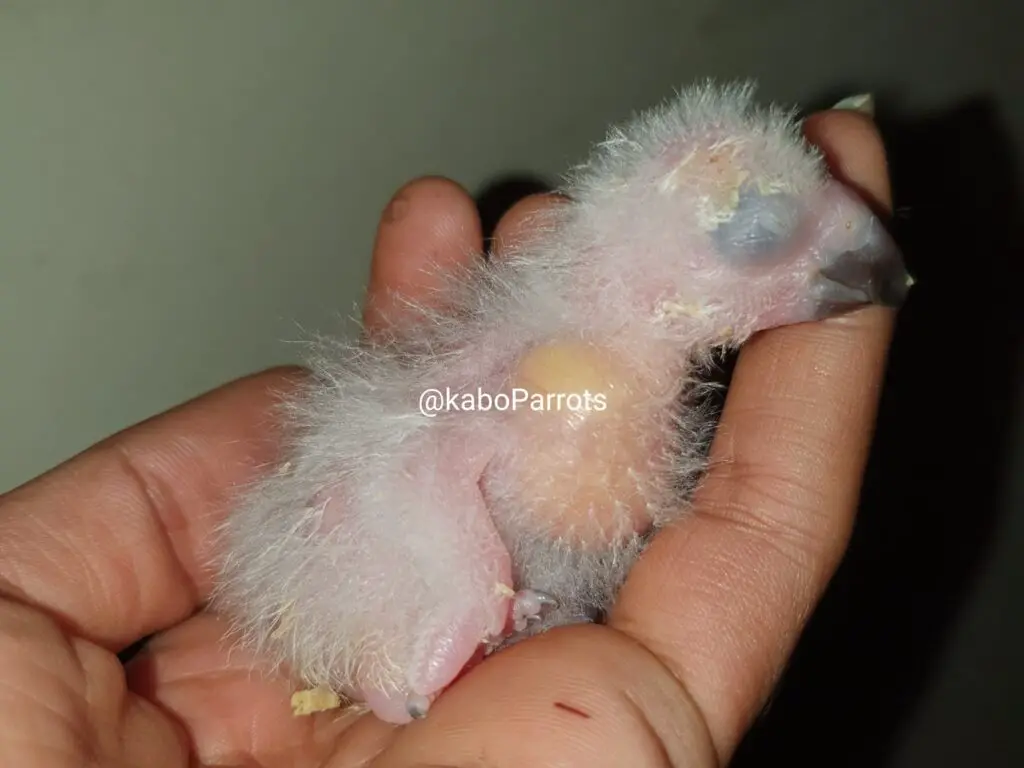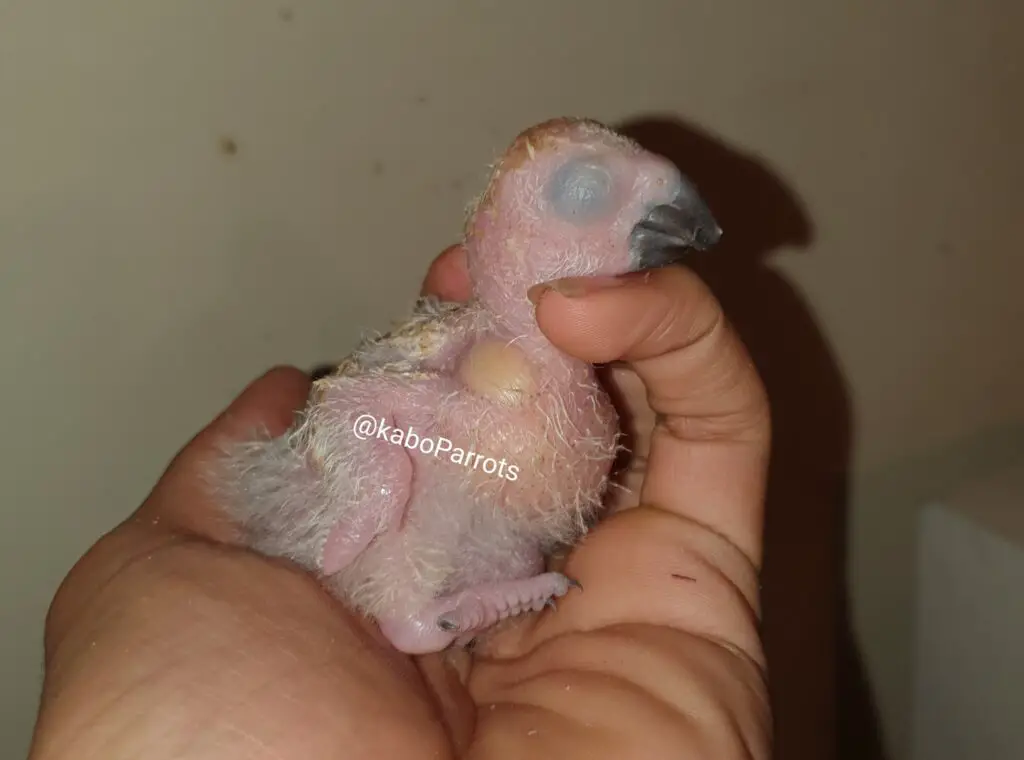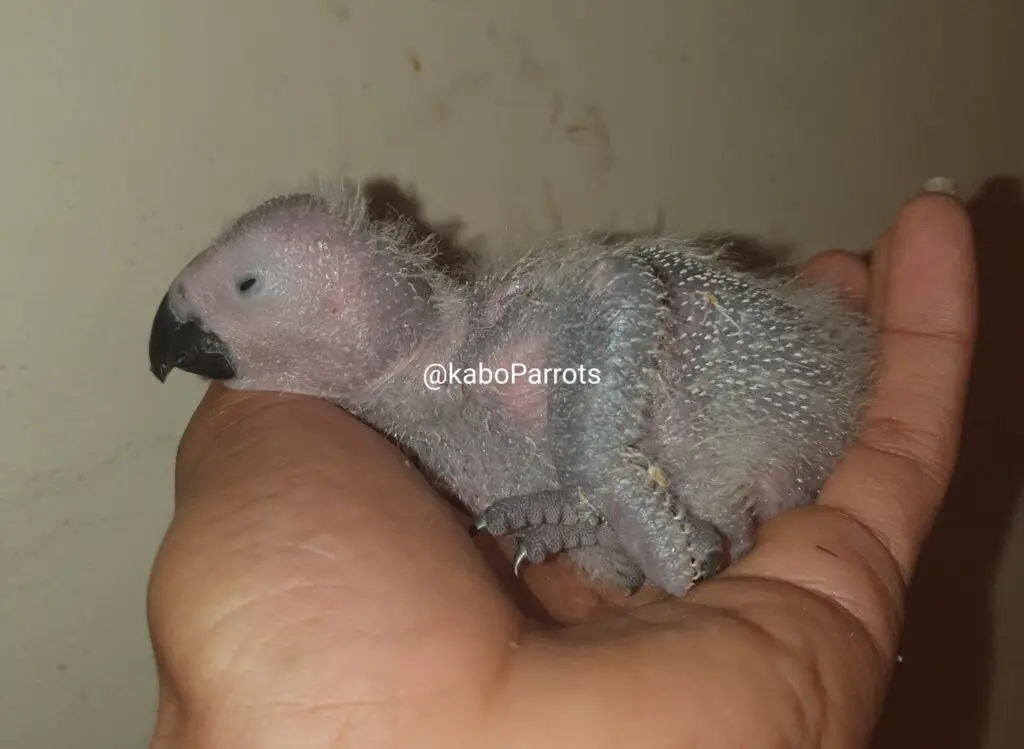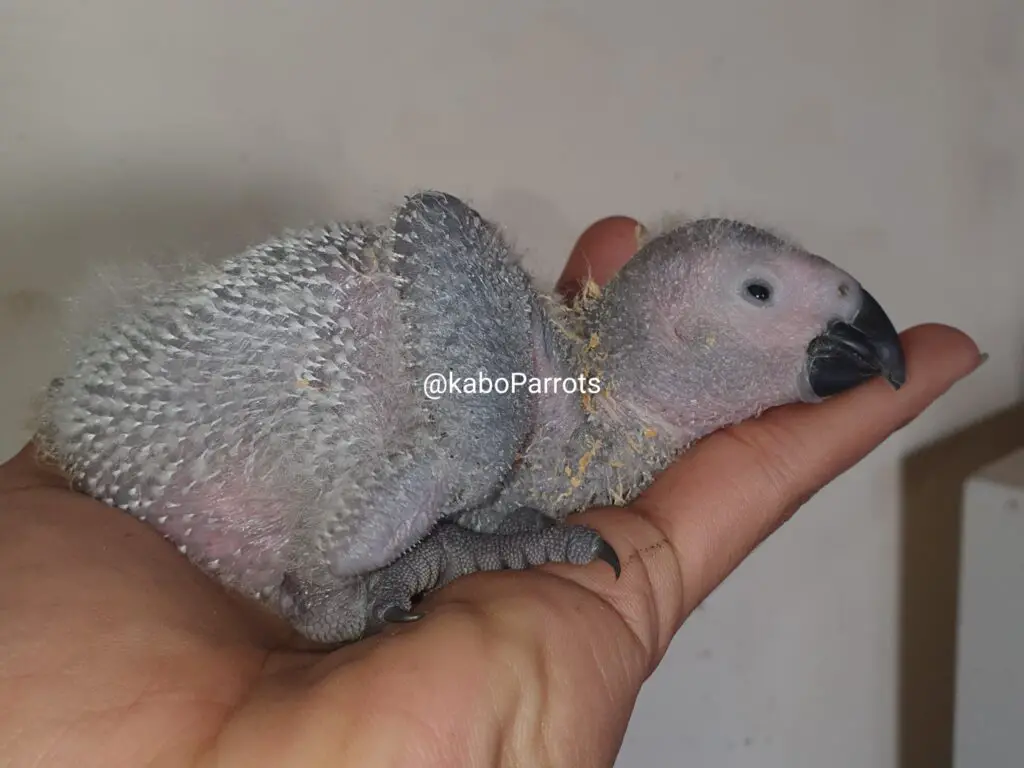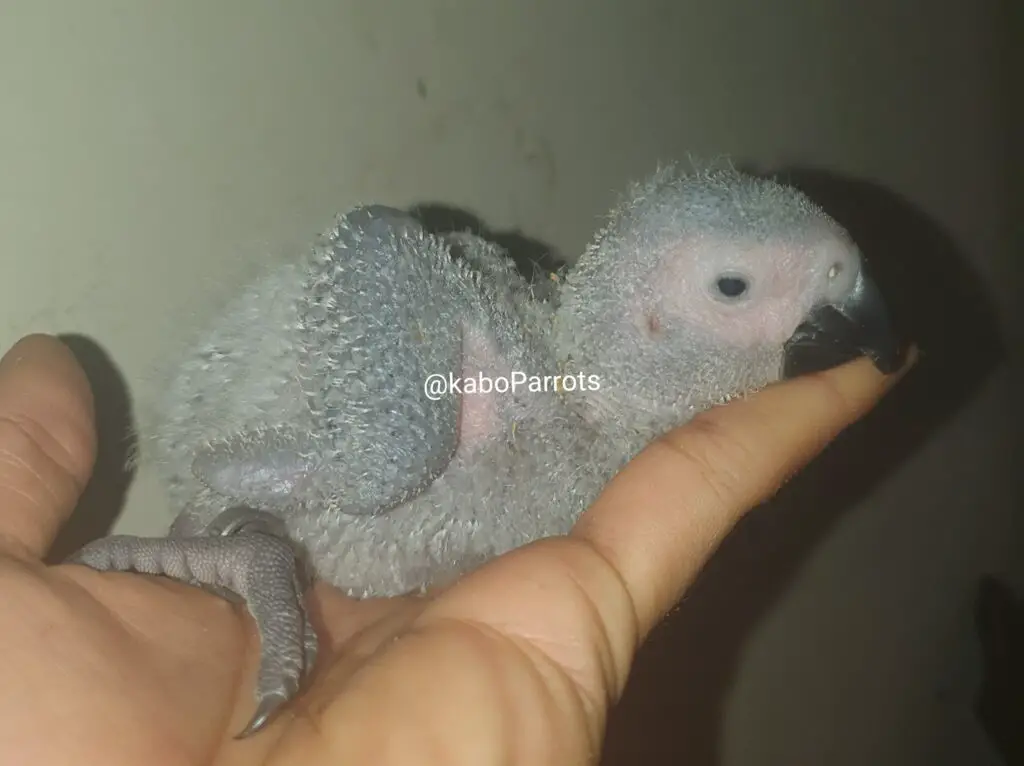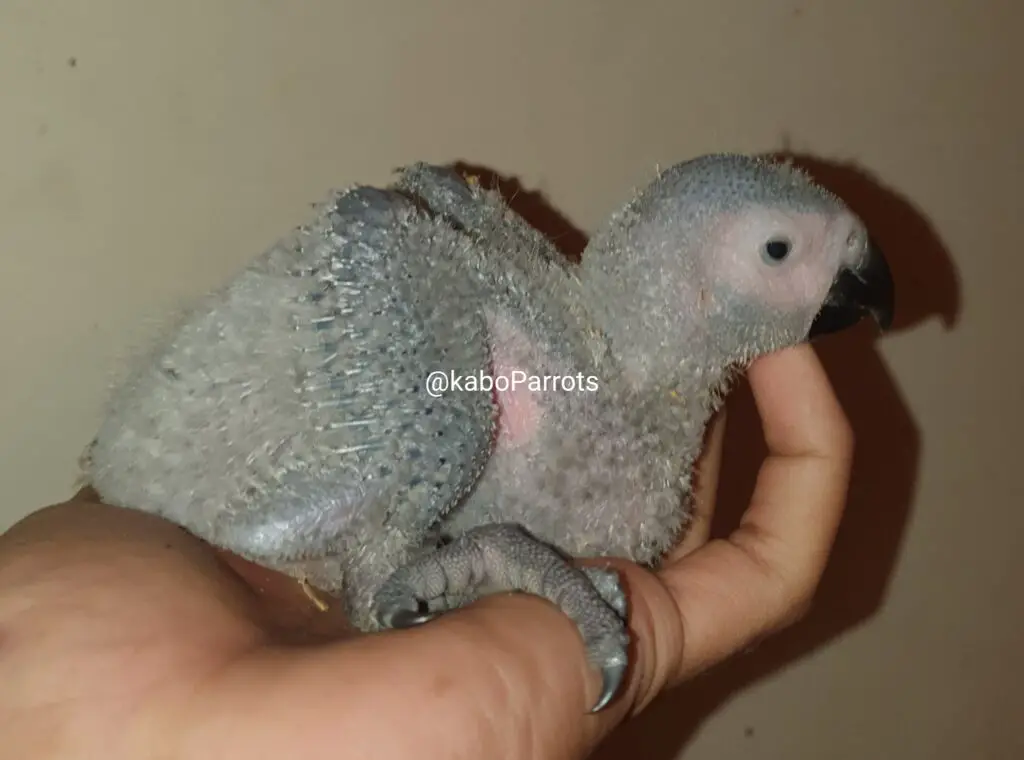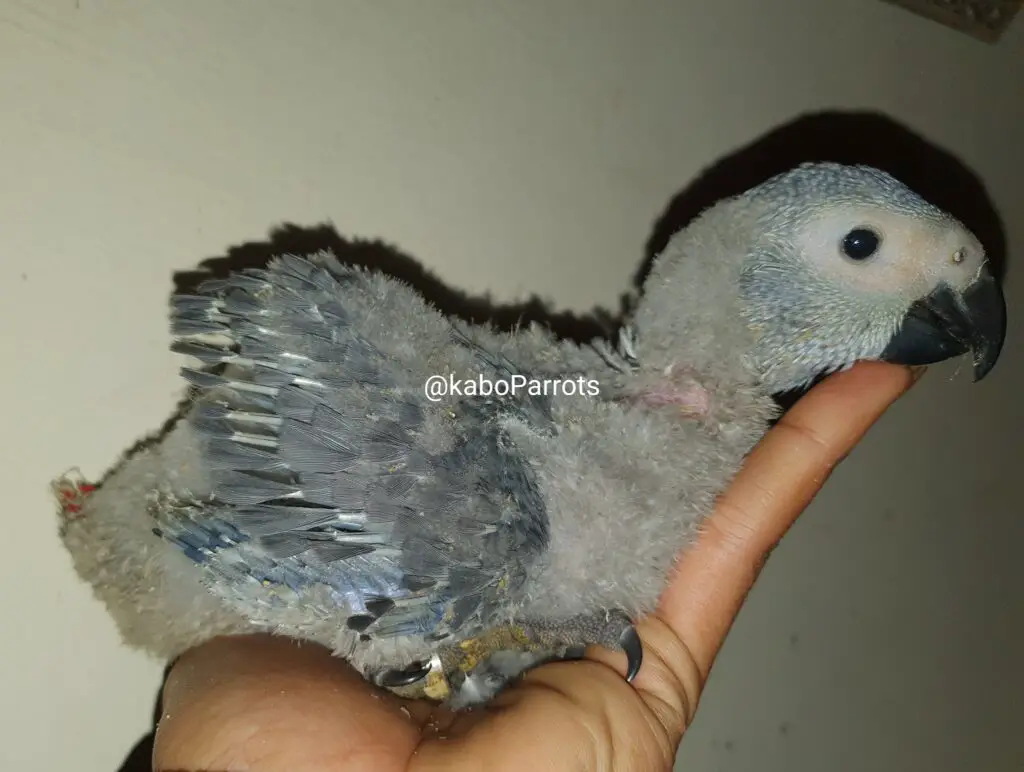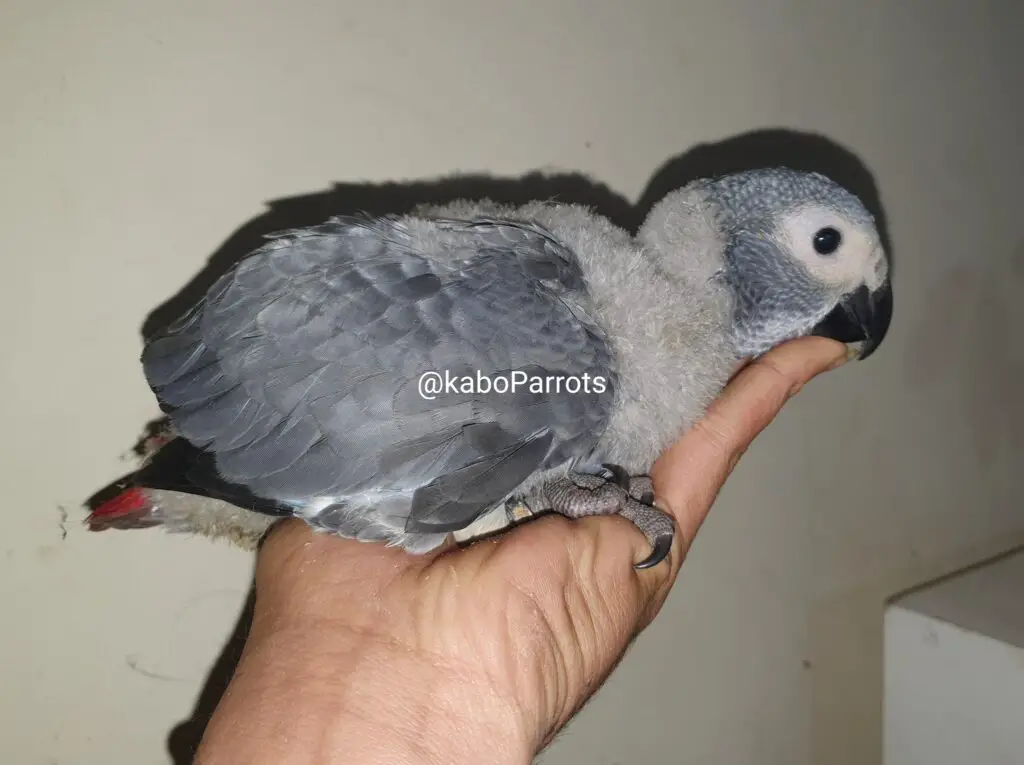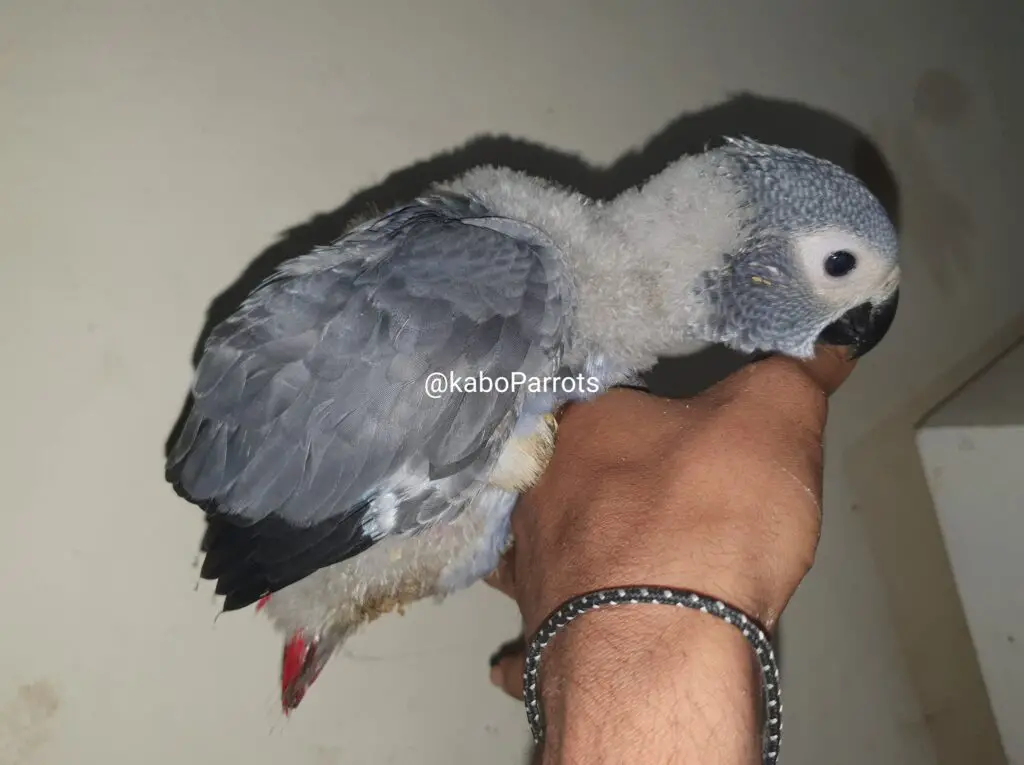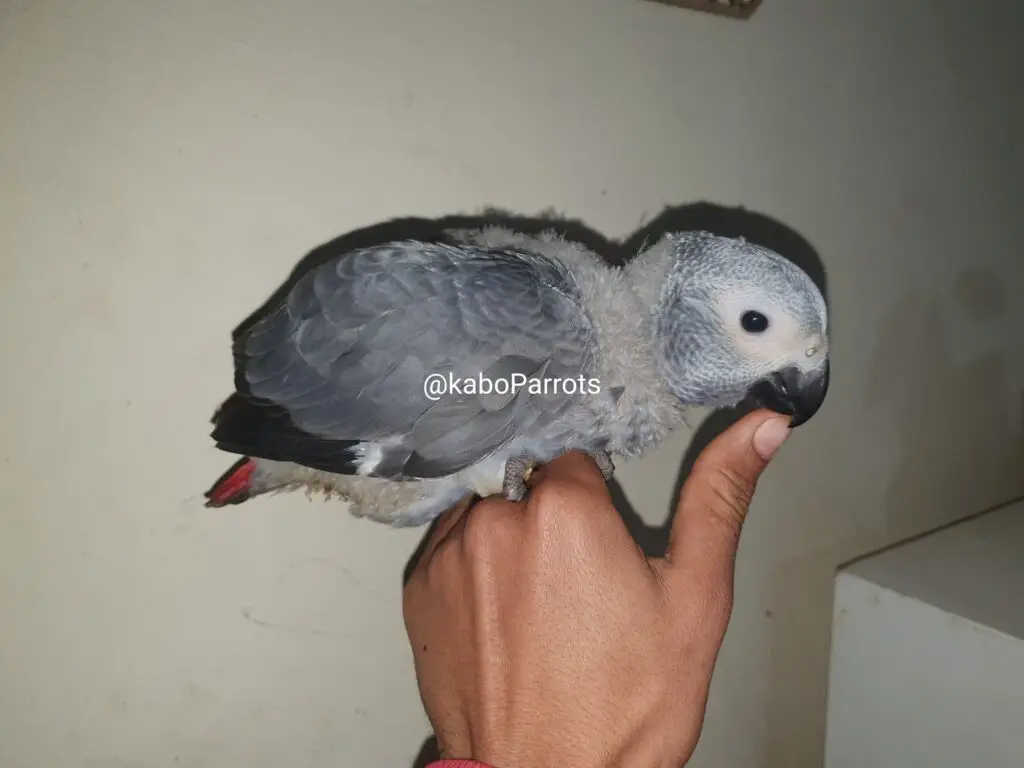
We find that more and more people want to “get started” in baby African Grey Parrot hand-rearing or are persuaded, when making a purchase, by skilled vendors to finish raising unweaned chicks by hand.
However, this practice is far from being a hobby but, on the contrary, requires equipment, experience, and unfailing availability as long as the bird is not weaned and autonomous.
Raising and feeding your baby an African grey parrot by hand cannot be improvised. (Hand Raising) requires time, special care, and important precautions. It is advisable to be well informed before starting.
African Grey Parrot growth Stages
Hand-feeding, hand-rearing, of young birds x is a type of breeding that cannot be improvised and requires a lot of time and attention. Many precautions must be taken so that the chick grows well and does not suffer from behavioral problems. Weaning should be gradual.
African Grey Parrot Growth Stages Day 1 to 12 Months
African grey parrot Baby Hand breeding
A suitable environment
Hand-rearing of a baby African grey parrot is not an easy thing and you have to think carefully before you get started. It is a practice that requires a lot of time, special precautions, especially during the first weeks. The living environment must be perfectly prepared to accommodate the chick.
You will need a breeder or an infrared lamp to keep the bird warm. A temperature of 30 to 32 ° C is necessary for the first stages. Hygiene must be irreproachable and the bird must be able to shelter from light.
Heat and humidity are among the conditions necessary for the bird to grow and digest properly. The temperature will be reduced as the feathers grow.
Hand breeding
Hand breeding may be necessary for different reasons. It can be imposed to save young chicks that the parents have abandoned or when one of the parents has died. We can choose hand breeding to tame the bird in order to accustom it to humans from an early age.
Whenever possible, it is recommended to wait until the chick is three weeks old before starting hand-rearing. At this age, he has had antibodies and still readily accepts the switch to syringe-feeding. In all cases, care should be taken to stimulate the bird as much as possible …
African Grey Acting Like a Baby
SOURCE:wingsNpaws
Hand feeding
Hand-feeding involves the use of a breeding mash to be diluted in water. The temperature of the mash should be around 32 ° C for good digestion: too cold, the bird will have difficulty digesting it; too hot, it can burn it.
It is possible to feed with a syringe or a spoon depending on the size of the bird.
In practice, you have to hold the baby African grey in front of you and inject the food from your right to your left. The syringe is placed to the left of the beak of the bird held in front of you.
This is very important because the digestive tract is on your left while the respiratory tract is on your right. This helps prevent false swallowing.
The amount varies according to the age and the species but for a three-week-old baby grey parrot, it takes about five meals a day 3 hours 30 between each meal, stopping at midnight. You should never feed if the crop is not emptied. Otherwise, there is a risk of blockage which can be fatal.
The number of meals will gradually decrease as the bird grows and the crop volume increases. Most often, we omit one meal per week, but again, each individual is unique and you must adapt to their needs.
At the start of feeding, the mash should have the consistency of pancake batter; it will be thickened later.
African Grey Parrot Babies
SOURCE:Parrot Wizard
The withdrawal
Weaning can begin around six or eight weeks depending on the species concerned. Parrots will not be weaned for three months. Around five weeks old, you can begin to present seeds to your bird. Gradually, he should be able to eat and drink on his own.
It is important to offer him various kinds of food with seeds, granules, fruits, vegetables so that he gradually gets used to vary his diet.
Breeding by hand: a know-how
We, therefore, thought it would be interesting to briefly present to you the obligations and difficulties surrounding this technique.
1- Specific and expensive equipment!
Rearing by hand from the birth of the bird can only be done by equipping yourself with a quality breeder with heating and ventilation with hygrometry electronically regulated to within 1 / 10th of a degree Celsius. This type of material costs several hundred dollars.
A breeder must also have an electronic scale accurate to +/- 2 grams (at least because a reading deviation of 2 grams represents 10% of the birth weight of an African Grey Parrot).
2 – Impeccable hygiene!
The instruments used for breeding the baby African parrot by hand must be disinfected after each use. Likewise, the brooder should be cleaned, ensuring that the chick does not undergo any temperature “deviation”.
3 – Full-time availability!
At birth, feeding is spread over an hourly period from 5 am to 11 pm.
At each “feed”, time should be allowed for the preparation of the mash, feeding, weighing, cleaning the “baby African grey parrot nest” and the chick after the “baby African grey parrot feeding”.
The chick should be weighed daily and a weight chart for each bird should be established.
The number of meals will decrease over the weeks and it is only from the 12th week that the bird will be able to start feeding on its own.it will not yet be fully autonomous.
4 – A special diet!
The food given to this baby is either a “personal” mixture or a mash sold by a renowned manufacturer.
In 2021, the quality of industrial baby African grey parrot breeding pâtés is such that it seems to us that they are dethroning personal mixtures for at least 3 reasons:
- Their final composition is known (% proteins,% lipids,% carbohydrates);
- Quality controls ensure reproducibility of production;
- When you have only one baby African grey parrot to feed, it is creating an additional hassle to make your own mixture!
It should be noted, however, that store-bought pâtés are expensive when they are of good quality.
Description of the African Grey Parrot baby
The baby African Grey Parrotparrot is a very popular and common ornamental bird. This species has been known as a domestic animal for centuries. These parrots appear on Egyptian hieroglyphics, and several civilizations have also considered them as such. The African Grey Parrot accompanied the Portuguese sailors during their long sea crossings.
Psittacus erithacus Erithacus has light gray plumage, cherry red tail, and black bill. It is found in eastern Côte d’Ivoire east to western Kenya and northwestern Tanzania.
Harness Trained Baby African Grey Parrot Enjoys Going to a Park
SOURCE:Parrot Wizard
The behavior of the African Grey Parrot baby
The African Grey Parrot baby are very sociable parrots who live in groups in the non-domestic state, in captivity, their need for the company does not change absolutely, it is absolutely necessary to devote them multiple hours per day, 3 hours is a minimum.
The Gabonese gray parrot or Jaco is one of the most common companion parrots in captivity. Indeed, the Gabonese Gray is considered the best speaking bird and, added to its spectacular intelligence, it is able to use words wisely.
It is very important to get your Gabonese gray used to meet a large number of people, to visit as many places as possible, and to make him see as many objects as possible from an early age so that he does not become fearful and thus become curious about things around him (this awakens his intelligence, just like toys).
Habitat of the Baby African Grey Parrot
Gabon gray appreciates both the house and the outdoor aviary (min. 3m2 on the ground), up to 5 ° c.
The cage, made of metal with solid bars and horizontal preferences and a closing system, should be as large as possible (the parrot should, at a minimum, be able to extend its wings without bumping into itself).
The cage must be placed in:
– a place where the gray will see people, it must not be isolated, alone in a room
– a bright place
– a good place where there is no (draft)
(avoid kitchen-like rooms where there are cooking fumes)
African Grey parrot feed
Parrots are very intelligent birds, therefore, the diet must be very varied so that the time of meals is very important in the day.
Its diet must be composed of a base of 60% of extruded or compressed granules of 25% of fruits and vegetables as well as of fibers provided by the seeds for 15%.
It is absolutely necessary to ban the avocado because it contains persin which is toxic because it decreases the absorption of proteins by the organism which causes edemas in the lungs, abdomen, and throat. Rhubarb contains oxalates which cause fatal gastroenteritis. For parsley it is mixed, it provides vitamin A which is positive, but also psoralens which cause sensitization to the sun.
It is also essential not to give the Gabonese gray parrot table scraps (meat, chocolate, crisps, beer, lemonade, milk, etc.) because even if it is crazy about it, it causes digestive disorders that can be catastrophic !!
African Grey Parrot reproduction
The female of Gabon lays 3 to 4 eggs which hatch after 30 days.
The female feeds alone during the first week, she is then helped in her task by the male.
The sexual maturity of the Gabonese gray parrot occurs at the age of five
How do you take care of a baby African GREY parrot?
SOURCE:Howcast
African grey parrot baby price
African grey parrot costs at least €700 and frequently around 1,000$ if not 1,200$. The cost difference depends on a few sources: 1300 for a pet store is the current cost, it is good that there is a margin, and at this cost, it is a young EAM.
It sometimes seems realistic to obtain babies for around 450$ – 500$ but beware an amateur could, if not die, because he would not be able to take care of them very well at a critical age.
How much is an African GREY baby?
At what age do African GREY parrots start talking?
Are African Greys good for beginners?
no, Baby African Greys parrots generally aren’t recommended for beginners

